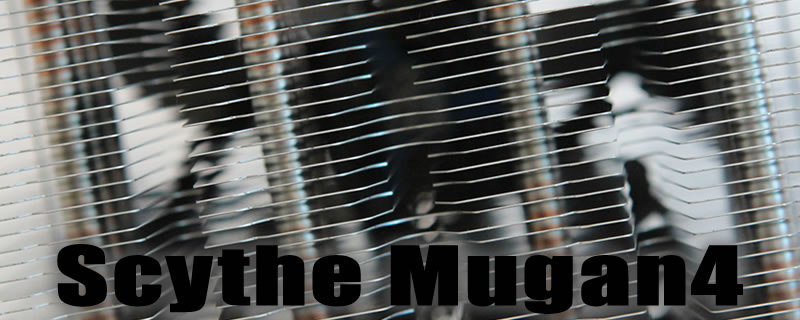Scythe Mugan4 Review
Â
Conclusion
When reviewing a cooler we often talk about the holy trinity of noise, looks and performance, as these are the main factors to consider when assessing the overall abilities of a cooler. Into this we add price and of course ease of installation but if the cooler fails significantly in the trinity test then it doesn’t really matter that it might be a dream to fit and be really really cheap.
Starting with noise at full speed the supplied 120mm fan at full tatt the fan emits 28dB(A) This drops all the way down to a near whisper of 5.3sB(A) when the fans speed is reduced to the lowest speed of just 400 RPM, appreciating of course that the lower the fan speed the worse the performance. Although 28dB9A) might seem quite loud in relative terms, subjectively we didn’t find the noise any more intrusive than the other fans within the case so can’t really mark the Mugan4 down for it.
The Mugan4 isn’t perhaps the most attractive cooler on the market today, but neither is it ugly, with the all-aluminium look giving it a certain old school charm. Its chunky dimensions certainly give it “case presence” even if this does cause some RAM encroachment issues. Build quality is also good for a cooler this cheap, remember it’s only £40. although we are a little perplexed with why Scythe have gone to the trouble of painting the 6 Aluminium heat pipes to resemble copper when most manufactures shine theirs up to make them not look like copper. The black fan that comes with the cooler is a simple back affair with no LEDs or bling to speak of, and although better looking than the Wheelie bin colours of the Gentle Typhoon range we still think we’d rather have had this cooler coupled with an 1800 RPM model of the GT.
It’s when we come to the performance of the Mugan4 that we really start to smile. betting as it does pretty much all of the other air coolers we’ve tested and a good few of the AIOs at the lower levels of overclock, the Mugan4 is still in the chats when we get up to the 4.4GHz test and even then is still able to beat the dual fan configuration of the NH-U14S by a few degrees, and betters the Alpenfohn K2 by a good 3 degrees, being only 3-4 degrees off the pace of the D14, which remember is nearly twice the price. Conspicuous by their absence are the other air coolers we’ve looked at as they simply couldn’t make the grade at this level. As you might expect though the majority of the AIOs and water cooling systems have pulled ahead by a fair margin, with only their low fan speed temps coming close to those of the Mugan4. Â
This performance though comes at a price. The chunky squat form of the Mugan4 will cause RAM encroachment issues with both massive and miniscule RAM heatsinks, basically anything more than a thin wrap round folded Aluminium coat. So if you’re sporting strikingly large RAM then this isn’t the cooler for you, and sadly the Mugan4 will lose a few points where it counts. Thankfully though, even though there’s quite a deal of overhang the fitting method adopted by Scythe for the Mugan4 is simplicity itself, even if the lack of tensioning springs did leave us wondering just how tight was too tight.
If you’re already taken by the performance of the Mugan4 and aren’t too bothered by the less than bling looks your smile is going to spread even wider when you look at the very reasonable £40 price tag. Granted another £10 or so will get you into entry level AIO territory, but if you don’t have that £10 or you just don’t fancy an AIO then the Mugan4 is a very good option
All in all we’re really quite impressed with the Mugan4. When we first plucked it out of the box we were more than a little concerned that its light weight and low price tag would be indicative of poor build quality and mediocre performance, but this hasn’t been the case at all. With the Mugan4 Scythe prove that a decent well-made low price tower cooler can hold its own in a market that is increasingly being woo’d over to the wet side.Â
Thanks to Quiet PC for sending the Mugan in for review, you can discuss your thoughts in the OC3D Forums.Â





